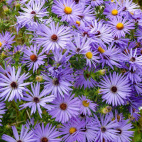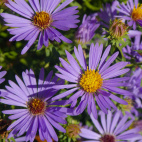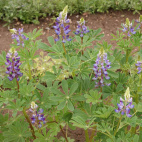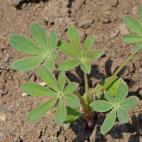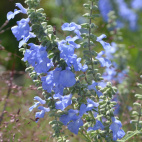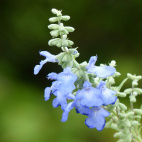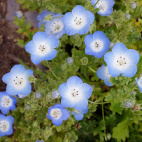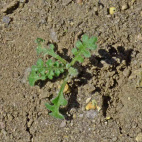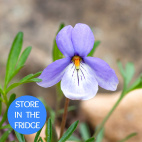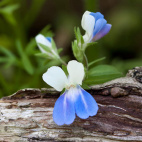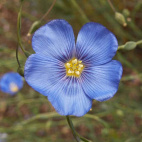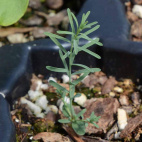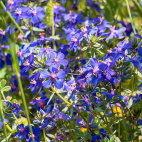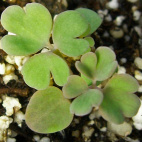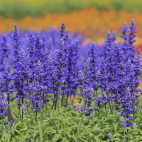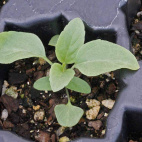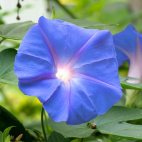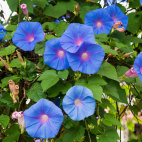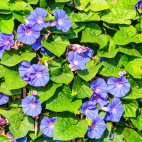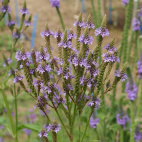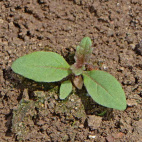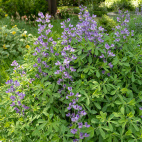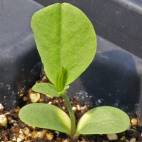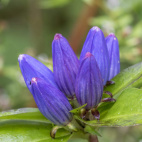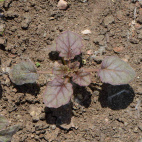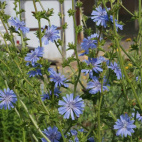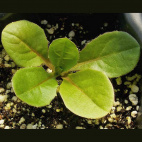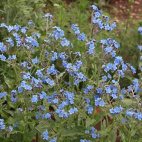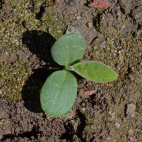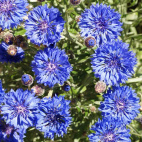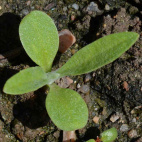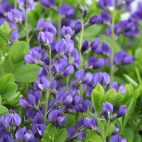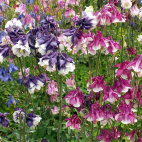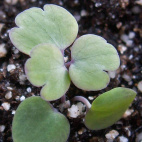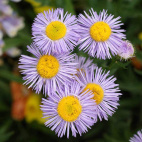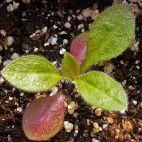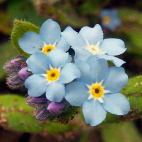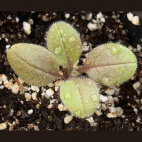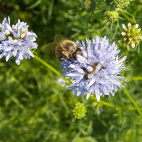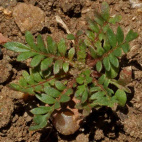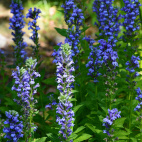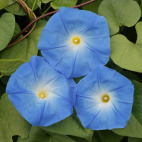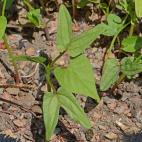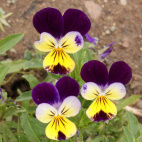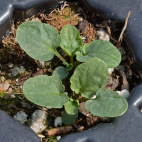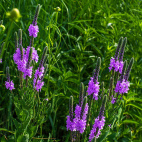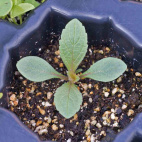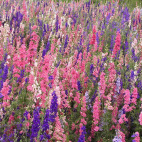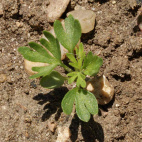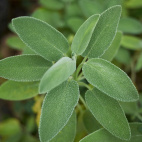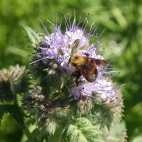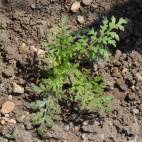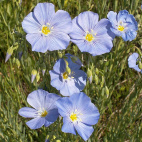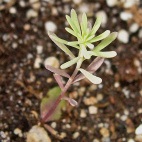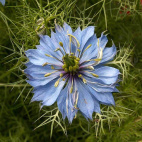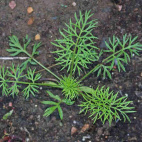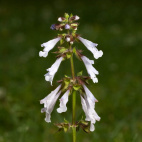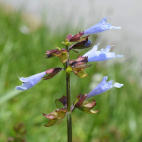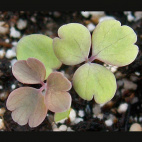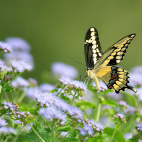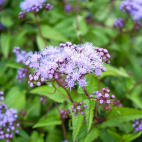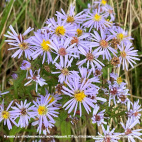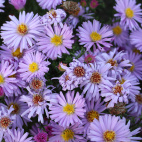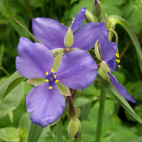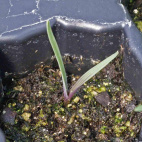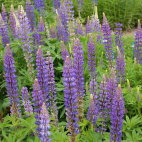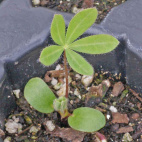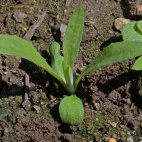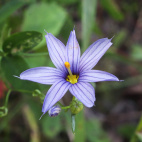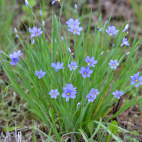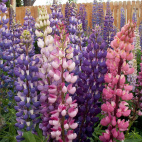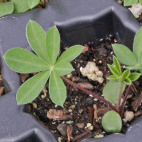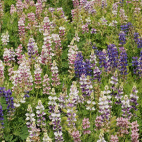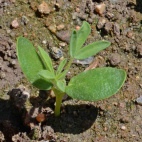Color
Availability
USDA Zone
Region
Type
Duration
Season
Germination
Soil
Sunlight
Height
Use
Narrow Your Search
Color
Availability
USDA Zone
Region
Type
Duration
Season
Germination
Soil
Sunlight
Height
Use
Wildflower Seeds - Plains Region
-
 On Sale!
Aromatic Aster Seeds
Aster oblongifolius
Distinguished by its attractive balsam-scented foliage, this large Aster blooms very late in the fall. Though rather uncommon in the wild, this lavender variety usually grows in rough, dry ground or prairie soil.Quick View$3.75 Pkt - $48.00 / Oz
On Sale!
Aromatic Aster Seeds
Aster oblongifolius
Distinguished by its attractive balsam-scented foliage, this large Aster blooms very late in the fall. Though rather uncommon in the wild, this lavender variety usually grows in rough, dry ground or prairie soil.Quick View$3.75 Pkt - $48.00 / Oz -
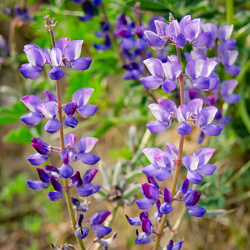 Arroyo Lupine Seeds
Lupinus succulentus
Though native to California, this lovely wildflower can be found throughout the American southwest. This annual grows quickly and is very easy to grow in the garden, no matter where you live.Quick Viewx
Arroyo Lupine Seeds
Lupinus succulentus
Though native to California, this lovely wildflower can be found throughout the American southwest. This annual grows quickly and is very easy to grow in the garden, no matter where you live.Quick ViewxArroyo Lupine Seeds
Lupinus succulentus
Though native to California, this lovely wildflower can be found throughout the American southwest. This annual grows quickly and is very easy to grow in the garden, no matter where you live.
$3.48 Pkt - $9.15 / Oz -
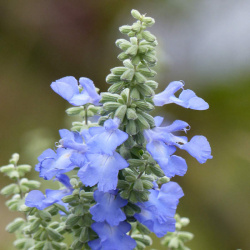 Azure Blue Sage Seeds
Salvia azurea
Reflecting the clear blue sky, these lovely blossoms illuminate the prairie landscape of the southern plains. This versatile plant has had medicinal, ornamental, and culinary uses for generations. This perennial needs a lot of heat to complete its life cycle, so it blooms late in northern regions.Quick Viewx
Azure Blue Sage Seeds
Salvia azurea
Reflecting the clear blue sky, these lovely blossoms illuminate the prairie landscape of the southern plains. This versatile plant has had medicinal, ornamental, and culinary uses for generations. This perennial needs a lot of heat to complete its life cycle, so it blooms late in northern regions.Quick ViewxAzure Blue Sage Seeds
Salvia azurea
Reflecting the clear blue sky, these lovely blossoms illuminate the prairie landscape of the southern plains. This versatile plant has had medicinal, ornamental, and culinary uses for generations. This perennial needs a lot of heat to complete its life cycle, so it blooms late in northern regions.
$3.75 Pkt - $64.00 / Oz -
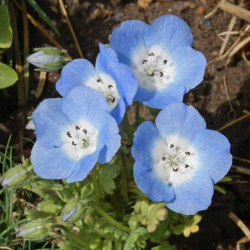 Baby Blue Eyes Seeds
Nemophila menziesii
Early spring brings this baby-blue annual to the foothills and grasslands of the western United States. Its petite habit makes it an excellent choice for massed plantings, containers, and borders.Quick View$2.98 Pkt - $9.35 / Oz
Baby Blue Eyes Seeds
Nemophila menziesii
Early spring brings this baby-blue annual to the foothills and grasslands of the western United States. Its petite habit makes it an excellent choice for massed plantings, containers, and borders.Quick View$2.98 Pkt - $9.35 / Oz -
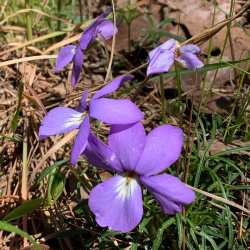 Store in the FridgeOut Of Stock
Bird's Foot Violet Seeds
Viola pedata
A stunning spring wildflower, this wildflower has been called the queen of violets. The petite plant grows just 4" tall but has rather large blooms.Quick Viewx
Store in the FridgeOut Of Stock
Bird's Foot Violet Seeds
Viola pedata
A stunning spring wildflower, this wildflower has been called the queen of violets. The petite plant grows just 4" tall but has rather large blooms.Quick ViewxBird's Foot Violet Seeds
Viola pedata
A stunning spring wildflower, this wildflower has been called the queen of violets. The petite plant grows just 4" tall but has rather large blooms.
$3.75 Pkt - $80.00 / Oz -
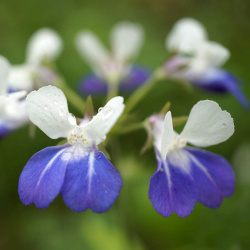 Out Of Stock
Blue Eyed Mary Seeds
Collinsia grandiflora
Expect compliments on this blue-eyed little beauty. The bright flower naturally grows in dry prairies, rocky areas, or at the border of woodlands, but seems quite at home in most average garden conditions as well.Quick Viewx
Out Of Stock
Blue Eyed Mary Seeds
Collinsia grandiflora
Expect compliments on this blue-eyed little beauty. The bright flower naturally grows in dry prairies, rocky areas, or at the border of woodlands, but seems quite at home in most average garden conditions as well.Quick ViewxBlue Eyed Mary Seeds
Collinsia grandiflora
Expect compliments on this blue-eyed little beauty. The bright flower naturally grows in dry prairies, rocky areas, or at the border of woodlands, but seems quite at home in most average garden conditions as well.
$3.48 Pkt - $10.19 / Oz -
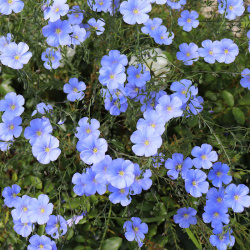 On Sale!
Blue Flax Seeds
Linum perrene
See the sky reflected in a sea of these heavenly blue blooms. This perennial is fast-growing and looks best as a mass planting. It is hard to imagine how this Linum Perrene plant produces such a vibrant color from just water and dirt.Quick View$3.48 Pkt - $7.65 / Oz
On Sale!
Blue Flax Seeds
Linum perrene
See the sky reflected in a sea of these heavenly blue blooms. This perennial is fast-growing and looks best as a mass planting. It is hard to imagine how this Linum Perrene plant produces such a vibrant color from just water and dirt.Quick View$3.48 Pkt - $7.65 / Oz -
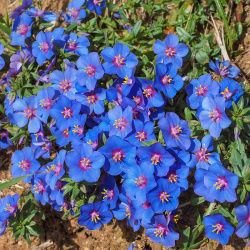 Out Of Stock
Blue Pimpernel Seeds
Anagallis monelli
One of the brightest, truest blues in nature, these eye-catching flowers originally grew wild along the rocky slopes and sand dunes of the Mediterranean coast. This annual is a lovely choice for hanging baskets or an annual wildflower planting.Quick Viewx
Out Of Stock
Blue Pimpernel Seeds
Anagallis monelli
One of the brightest, truest blues in nature, these eye-catching flowers originally grew wild along the rocky slopes and sand dunes of the Mediterranean coast. This annual is a lovely choice for hanging baskets or an annual wildflower planting.Quick ViewxBlue Pimpernel Seeds
Anagallis monelli
One of the brightest, truest blues in nature, these eye-catching flowers originally grew wild along the rocky slopes and sand dunes of the Mediterranean coast. This annual is a lovely choice for hanging baskets or an annual wildflower planting.
$2.98 Pkt - $10.57 / Oz -
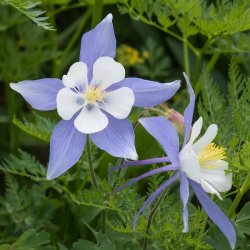 Blue Rocky Mountain Columbine Seeds
Aquilegia caerulea
This blue beauty grows in the meadows and cliffs of the Rocky Mountains. Many gardeners prize this clump-forming perennial with its large upward-facing blue and white flowers - it is so unique! Fill your home garden with a variety of our Midwest wildflower seed mixes.Quick Viewx
Blue Rocky Mountain Columbine Seeds
Aquilegia caerulea
This blue beauty grows in the meadows and cliffs of the Rocky Mountains. Many gardeners prize this clump-forming perennial with its large upward-facing blue and white flowers - it is so unique! Fill your home garden with a variety of our Midwest wildflower seed mixes.Quick ViewxBlue Rocky Mountain Columbine Seeds
Aquilegia caerulea
This blue beauty grows in the meadows and cliffs of the Rocky Mountains. Many gardeners prize this clump-forming perennial with its large upward-facing blue and white flowers - it is so unique! Fill your home garden with a variety of our Midwest wildflower seed mixes.
$3.48 Pkt - $20.16 / Oz -
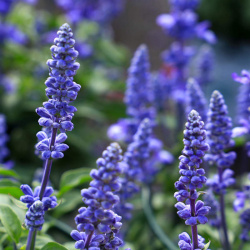 On Sale!
Blue Sage Seeds
Salvia farinacea
Dressed in vivid blue, these wildflower spikes are easy to grow. This perennial comes from Texas, so it can tolerate a lot of heat and drought. This plant has a wild habit and may look a little unruly in a refined garden.Quick View$3.48 Pkt - $15.72 / Oz
On Sale!
Blue Sage Seeds
Salvia farinacea
Dressed in vivid blue, these wildflower spikes are easy to grow. This perennial comes from Texas, so it can tolerate a lot of heat and drought. This plant has a wild habit and may look a little unruly in a refined garden.Quick View$3.48 Pkt - $15.72 / Oz -
 On Sale!
Blue Star Morning Glory Seeds
Ipomea tricolor
This rare variety features large, pale blue flowers with dark blue markings. This annual climbing vine is perfect for a tall fence or trellis, and by the end of the growing season will have enveloped it with its vining flowers and leaves.Quick View$3.25 Pkt - $5.96 / Oz
On Sale!
Blue Star Morning Glory Seeds
Ipomea tricolor
This rare variety features large, pale blue flowers with dark blue markings. This annual climbing vine is perfect for a tall fence or trellis, and by the end of the growing season will have enveloped it with its vining flowers and leaves.Quick View$3.25 Pkt - $5.96 / Oz -
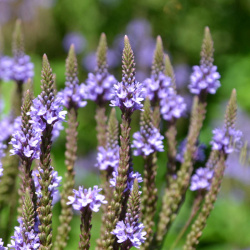 On Sale!
Blue Vervain Seeds
Verbena hastata
These small blue blooms grow on tall stems and are frequently found growing in moist areas. This native attracts a variety of butterflies and is often used in wildflower seed mixes.Quick View$3.48 Pkt - $12.65 / Oz
On Sale!
Blue Vervain Seeds
Verbena hastata
These small blue blooms grow on tall stems and are frequently found growing in moist areas. This native attracts a variety of butterflies and is often used in wildflower seed mixes.Quick View$3.48 Pkt - $12.65 / Oz -
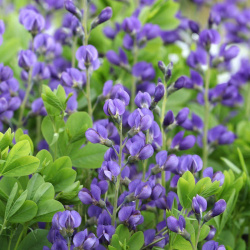 On Sale!
Blue Wild Indigo Seeds
Baptisia australis
Though slow to establish, these brilliant blue and purple blossoms are worth the wait. The bushy perennial can persist for decades and is a source for indigo dye.Quick View$3.48 Pkt - $15.95 / Oz
On Sale!
Blue Wild Indigo Seeds
Baptisia australis
Though slow to establish, these brilliant blue and purple blossoms are worth the wait. The bushy perennial can persist for decades and is a source for indigo dye.Quick View$3.48 Pkt - $15.95 / Oz -
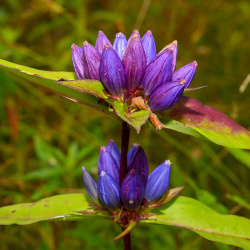 Bottle Gentian Seeds
Gentiana andrewsii
Named for their nearly closed tubular blossoms, these unusual wildflowers look like buds about to burst open. The only way they get pollinated is that bumblebees force their way in and do their duty.Quick View$3.75 Pkt - $100.00 / Oz
Bottle Gentian Seeds
Gentiana andrewsii
Named for their nearly closed tubular blossoms, these unusual wildflowers look like buds about to burst open. The only way they get pollinated is that bumblebees force their way in and do their duty.Quick View$3.75 Pkt - $100.00 / Oz -
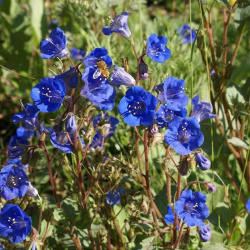 On Sale!
California Bluebell Seeds
Phacelia campanularia
This wildflower grows its intense blue bells in the wild deserts of California and Arizona. This tough little annual native now also colors gardens across the country, planted en masse, in rock gardens, or in even in containers. Bees are drawn to the wildflower as a source of nectar early in the growing season.Quick Viewx
On Sale!
California Bluebell Seeds
Phacelia campanularia
This wildflower grows its intense blue bells in the wild deserts of California and Arizona. This tough little annual native now also colors gardens across the country, planted en masse, in rock gardens, or in even in containers. Bees are drawn to the wildflower as a source of nectar early in the growing season.Quick ViewxCalifornia Bluebell Seeds
Phacelia campanularia
This wildflower grows its intense blue bells in the wild deserts of California and Arizona. This tough little annual native now also colors gardens across the country, planted en masse, in rock gardens, or in even in containers. Bees are drawn to the wildflower as a source of nectar early in the growing season.
$2.98 Pkt - $9.71 / Oz -
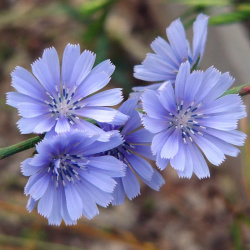 Chicory Seeds
Cichorium intybus
These stunning electric blue blooms are a feast for the eyes. This wildflower is so easy to grow that some gardeners consider it to be invasive. The leaves of the plant are edible and make nutritious salads.Quick View$2.98 Pkt - $6.67 / Oz
Chicory Seeds
Cichorium intybus
These stunning electric blue blooms are a feast for the eyes. This wildflower is so easy to grow that some gardeners consider it to be invasive. The leaves of the plant are edible and make nutritious salads.Quick View$2.98 Pkt - $6.67 / Oz -
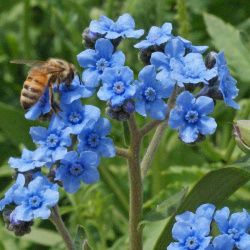 Chinese Forget Me Not Seeds
Cynoglossum amabile
Ever a favorite, these dainty blue flowers will charm any heart. This annual Asian variety has slightly larger flowers and rougher foliage than true Forget Me Not, but grows faster, and produces blooms sooner.Quick View$3.48 Pkt - $5.96 / Oz
Chinese Forget Me Not Seeds
Cynoglossum amabile
Ever a favorite, these dainty blue flowers will charm any heart. This annual Asian variety has slightly larger flowers and rougher foliage than true Forget Me Not, but grows faster, and produces blooms sooner.Quick View$3.48 Pkt - $5.96 / Oz -
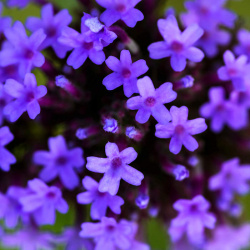 Out Of Stock
Dark Blue Moss Vervain Seeds
Verbena tenuisecta
Originally from South America, these beautiful blue flowers stay close to the ground. Butterflies are attracted to the small blue flowers, so it would be an ideal plant for a small butterfly garden.Quick Viewx
Out Of Stock
Dark Blue Moss Vervain Seeds
Verbena tenuisecta
Originally from South America, these beautiful blue flowers stay close to the ground. Butterflies are attracted to the small blue flowers, so it would be an ideal plant for a small butterfly garden.Quick ViewxDark Blue Moss Vervain Seeds
Verbena tenuisecta
Originally from South America, these beautiful blue flowers stay close to the ground. Butterflies are attracted to the small blue flowers, so it would be an ideal plant for a small butterfly garden.
$2.98 Pkt - $8.93 / Oz -
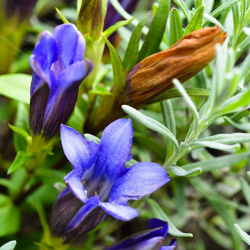 Out Of Stock
Downy Gentian Seeds
Gentiana puberulenta
Nearly identical to the traditional European gentian, this American native tolerates drought better than it's cousin. The deep violet blossoms spring up in prairies or rocky ground.Quick Viewx
Out Of Stock
Downy Gentian Seeds
Gentiana puberulenta
Nearly identical to the traditional European gentian, this American native tolerates drought better than it's cousin. The deep violet blossoms spring up in prairies or rocky ground.Quick ViewxDowny Gentian Seeds
Gentiana puberulenta
Nearly identical to the traditional European gentian, this American native tolerates drought better than it's cousin. The deep violet blossoms spring up in prairies or rocky ground.
$3.96 Pkt - $200.00 / Oz -
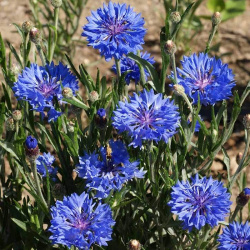 Dwarf Blue Bachelor Button Cornflower Seeds
Centaurea cyanus
Best known for its vivid blue color, this old-fashioned annual wildflower continues to be a favorite. Lovely fresh or dried, this dwarf grows less than a foot tall and works well in small spaces.Quick View$3.48 Pkt - $5.96 / Oz
Dwarf Blue Bachelor Button Cornflower Seeds
Centaurea cyanus
Best known for its vivid blue color, this old-fashioned annual wildflower continues to be a favorite. Lovely fresh or dried, this dwarf grows less than a foot tall and works well in small spaces.Quick View$3.48 Pkt - $5.96 / Oz -
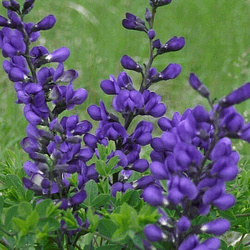 Dwarf Blue Indigo Seeds
Baptisia minor
Deep blue flowers provide a striking contrast to a native planting or garden. The shrub-like plants also have a very lovely green foliage.Quick View$3.48 Pkt - $22.17 / Oz
Dwarf Blue Indigo Seeds
Baptisia minor
Deep blue flowers provide a striking contrast to a native planting or garden. The shrub-like plants also have a very lovely green foliage.Quick View$3.48 Pkt - $22.17 / Oz -
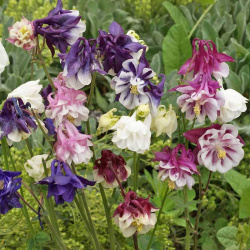 Dwarf Columbine Seed Mix
Aquilegia vulgaris
These delicate, nodding blossoms grow wild throughout much of northern Europe. This 16" dwarf variety produces a lovely mix of colors that will brighten any space!Quick View$3.48 Pkt - $12.65 / Oz
Dwarf Columbine Seed Mix
Aquilegia vulgaris
These delicate, nodding blossoms grow wild throughout much of northern Europe. This 16" dwarf variety produces a lovely mix of colors that will brighten any space!Quick View$3.48 Pkt - $12.65 / Oz -
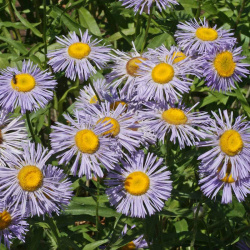 On Sale!
Fleabane Daisy Seeds
Erigeron speciosus
Also known as Dainty Daisy, this sweet mini version brings charm wherever it grows. This hardy perennial is also easy to grow, ensuring a great payback for your efforts.Quick Viewx
On Sale!
Fleabane Daisy Seeds
Erigeron speciosus
Also known as Dainty Daisy, this sweet mini version brings charm wherever it grows. This hardy perennial is also easy to grow, ensuring a great payback for your efforts.Quick ViewxFleabane Daisy Seeds
Erigeron speciosus
Also known as Dainty Daisy, this sweet mini version brings charm wherever it grows. This hardy perennial is also easy to grow, ensuring a great payback for your efforts.
$3.48 Pkt - $15.95 / Oz -
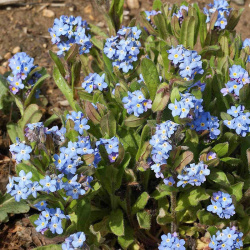 Forget Me Not Seeds
Myosotis sylvatica
One of the most beloved wildflowers, this true blue beauty captivates gardeners worldwide. Plant this annual en masse or as a border for an unforgettable spring bloom. Do not confuse this original wildflower with the Chinese Forget Me Not.Quick View$2.98 Pkt - $11.47 / Oz
Forget Me Not Seeds
Myosotis sylvatica
One of the most beloved wildflowers, this true blue beauty captivates gardeners worldwide. Plant this annual en masse or as a border for an unforgettable spring bloom. Do not confuse this original wildflower with the Chinese Forget Me Not.Quick View$2.98 Pkt - $11.47 / Oz -
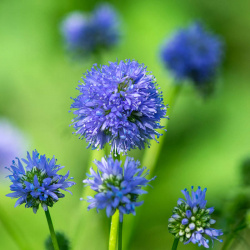 Globe Gilia Seeds
Gilia capitata
These pretty pincushion-like globes come in a lovely violet-blue hue. They are native to the West Coast but are grown as an annual in flower gardens across the US. The sweetly scented blossoms are also very attractive to butterflies.Quick View$2.98 Pkt - $7.65 / Oz
Globe Gilia Seeds
Gilia capitata
These pretty pincushion-like globes come in a lovely violet-blue hue. They are native to the West Coast but are grown as an annual in flower gardens across the US. The sweetly scented blossoms are also very attractive to butterflies.Quick View$2.98 Pkt - $7.65 / Oz -
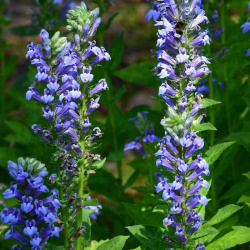 Great Blue Lobelia Seeds
Lobelia siphilitica
These intense blue beauties contrast beautifully with Cardinal Flower - their deep red cousin. Both love moisture and can be planted in low-lying areas such as around ponds or near streams. The tall spikes are also attractive to hummingbirds and butterflies.Quick Viewx
Great Blue Lobelia Seeds
Lobelia siphilitica
These intense blue beauties contrast beautifully with Cardinal Flower - their deep red cousin. Both love moisture and can be planted in low-lying areas such as around ponds or near streams. The tall spikes are also attractive to hummingbirds and butterflies.Quick ViewxGreat Blue Lobelia Seeds
Lobelia siphilitica
These intense blue beauties contrast beautifully with Cardinal Flower - their deep red cousin. Both love moisture and can be planted in low-lying areas such as around ponds or near streams. The tall spikes are also attractive to hummingbirds and butterflies.
$3.75 Pkt - $36.00 / Oz -
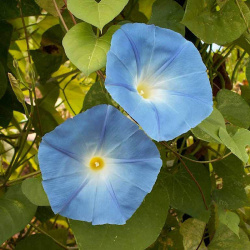 Heavenly Blue Morning Glory Seeds
Ipomea tricolor
As blue as the summer sky, this classic heirloom variety is a heavenly choice. This beautiful, climbing vine will scale any arbor, fence, or trellis that is nearby. This annual is very easy to grow and has a showy reward for those who grow it.Quick View$3.48 Pkt - $5.96 / Oz
Heavenly Blue Morning Glory Seeds
Ipomea tricolor
As blue as the summer sky, this classic heirloom variety is a heavenly choice. This beautiful, climbing vine will scale any arbor, fence, or trellis that is nearby. This annual is very easy to grow and has a showy reward for those who grow it.Quick View$3.48 Pkt - $5.96 / Oz -
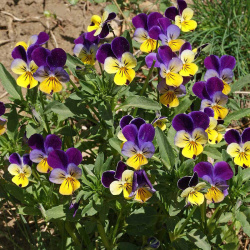 Helen Mount Johnny Jump Up Seeds
Viola tricolor
With cheery purple, yellow, and white faces, this charming wildflower looks a mini version of the pansy. This petite beauty often reseeds itself and springs up voluntarily year after year.Quick View$3.48 Pkt - $14.07 / Oz
Helen Mount Johnny Jump Up Seeds
Viola tricolor
With cheery purple, yellow, and white faces, this charming wildflower looks a mini version of the pansy. This petite beauty often reseeds itself and springs up voluntarily year after year.Quick View$3.48 Pkt - $14.07 / Oz -
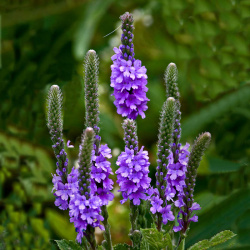 On Sale!
Hoary Vervain Seeds
Verbena stricta
This is the hairy member of the vervain family that sports larger flowers than the cousins. It also is different in that it thrives in dry soils, instead of the damp stuff that the cousins prefer. But like the cousins, this native perennial does attract butterflies and pollinators.Quick Viewx
On Sale!
Hoary Vervain Seeds
Verbena stricta
This is the hairy member of the vervain family that sports larger flowers than the cousins. It also is different in that it thrives in dry soils, instead of the damp stuff that the cousins prefer. But like the cousins, this native perennial does attract butterflies and pollinators.Quick ViewxHoary Vervain Seeds
Verbena stricta
This is the hairy member of the vervain family that sports larger flowers than the cousins. It also is different in that it thrives in dry soils, instead of the damp stuff that the cousins prefer. But like the cousins, this native perennial does attract butterflies and pollinators.
$3.48 Pkt - $12.65 / Oz -
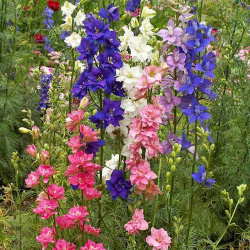 Imperial Rocket Larkspur Seed Mix
Delphinium consolida
Blossoming in blue, pink, white, and purple, these colorful flowers are easy to grow, making them popular in many annual flower gardens. The hummingbirds will be humming over your garden, and you can also cut the flowers and enjoy them inside as well.Quick Viewx
Imperial Rocket Larkspur Seed Mix
Delphinium consolida
Blossoming in blue, pink, white, and purple, these colorful flowers are easy to grow, making them popular in many annual flower gardens. The hummingbirds will be humming over your garden, and you can also cut the flowers and enjoy them inside as well.Quick ViewxImperial Rocket Larkspur Seed Mix
Delphinium consolida
Blossoming in blue, pink, white, and purple, these colorful flowers are easy to grow, making them popular in many annual flower gardens. The hummingbirds will be humming over your garden, and you can also cut the flowers and enjoy them inside as well.
$3.48 Pkt - $7.52 / Oz -
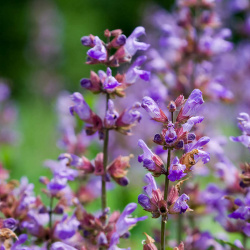 On Sale!
Kitchen Sage Seeds
Salvia officinalis
Perfect for the herb garden, these pungent gray-green leaves can add flavor to meats, stuffing, or tea. It is also known as Broadleaf Sage and has been used in medicinal and culinary gardens for centuries.Quick View$3.48 Pkt - $11.47 / Oz
On Sale!
Kitchen Sage Seeds
Salvia officinalis
Perfect for the herb garden, these pungent gray-green leaves can add flavor to meats, stuffing, or tea. It is also known as Broadleaf Sage and has been used in medicinal and culinary gardens for centuries.Quick View$3.48 Pkt - $11.47 / Oz -
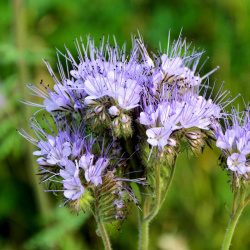 Lacy Phacelia Seeds
Phacelia tanacetifolia
This annual is a popular honey plant and creates an unforgettable lavender carpet that is always buzzing. The resilient desert native flourishes in lots of sunlight, and can handle heat and drought. It also is effortless to grow and produces a lot of seeds that can sprout the following year.Quick Viewx
Lacy Phacelia Seeds
Phacelia tanacetifolia
This annual is a popular honey plant and creates an unforgettable lavender carpet that is always buzzing. The resilient desert native flourishes in lots of sunlight, and can handle heat and drought. It also is effortless to grow and produces a lot of seeds that can sprout the following year.Quick ViewxLacy Phacelia Seeds
Phacelia tanacetifolia
This annual is a popular honey plant and creates an unforgettable lavender carpet that is always buzzing. The resilient desert native flourishes in lots of sunlight, and can handle heat and drought. It also is effortless to grow and produces a lot of seeds that can sprout the following year.
$3.48 Pkt - $5.96 / Oz -
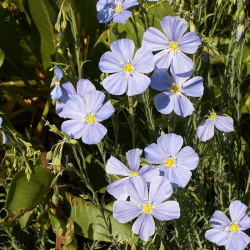 Lewis Flax Seeds
Linum lewisii
This western native grows in lovely, pale blue profusion, and is named after the Lewis and Clark expedition. It is similar to Blue Flax but is a little shorter, and not quite as vivid. Some gardeners like to mix the two varieties to create a bit more texture in the planting. This perennial is very easy to grow and looks great when planted en masse.Quick Viewx
Lewis Flax Seeds
Linum lewisii
This western native grows in lovely, pale blue profusion, and is named after the Lewis and Clark expedition. It is similar to Blue Flax but is a little shorter, and not quite as vivid. Some gardeners like to mix the two varieties to create a bit more texture in the planting. This perennial is very easy to grow and looks great when planted en masse.Quick ViewxLewis Flax Seeds
Linum lewisii
This western native grows in lovely, pale blue profusion, and is named after the Lewis and Clark expedition. It is similar to Blue Flax but is a little shorter, and not quite as vivid. Some gardeners like to mix the two varieties to create a bit more texture in the planting. This perennial is very easy to grow and looks great when planted en masse.
$3.48 Pkt - $12.65 / Oz -
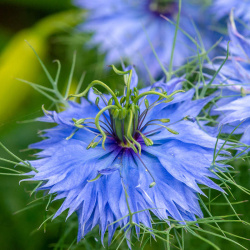 On Sale!
Love In A Mist Seeds
Nigella damascena
A time-honored favorite in English cottage gardens, this annual originally comes from the Mediterranean region. It blooms in colors like blue, pink and white, and can be enjoyed either fresh or in dried flower arrangements.Quick View$3.48 Pkt - $7.01 / Oz
On Sale!
Love In A Mist Seeds
Nigella damascena
A time-honored favorite in English cottage gardens, this annual originally comes from the Mediterranean region. It blooms in colors like blue, pink and white, and can be enjoyed either fresh or in dried flower arrangements.Quick View$3.48 Pkt - $7.01 / Oz -
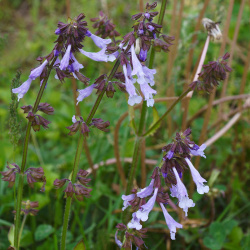 Out Of Stock
Lyre Leaved Sage Seeds
Salvia lyrata
A pale blue, this rare wildflower brings delicate charm to any garden or planting. This versatile plant has had medicinal, ornamental, and culinary uses for generations. It is also loved by hummingbirds.Quick View$3.75 Pkt - $40.00 / Oz
Out Of Stock
Lyre Leaved Sage Seeds
Salvia lyrata
A pale blue, this rare wildflower brings delicate charm to any garden or planting. This versatile plant has had medicinal, ornamental, and culinary uses for generations. It is also loved by hummingbirds.Quick View$3.75 Pkt - $40.00 / Oz -
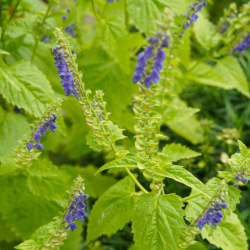 Mad Dog Skullcap Seeds
Scutellaria lateriflora
Discovered by ancient herbalists, this native perennial is highly valued for its medicinal benefits. These tiny, bud-like flowers bloom in pale blue, purple, or white.Quick View$3.75 Pkt - $64.00 / Oz
Mad Dog Skullcap Seeds
Scutellaria lateriflora
Discovered by ancient herbalists, this native perennial is highly valued for its medicinal benefits. These tiny, bud-like flowers bloom in pale blue, purple, or white.Quick View$3.75 Pkt - $64.00 / Oz -
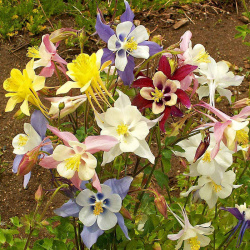 McKana Giants Columbine Seed Mix
Aquilegia caerulea
Developed explicitly for its large colorful blooms, this AAS Award winner first became available in the 1950s. A striking choice for any gardener who loves the distinctive columbine shaped flowers.Quick View$3.48 Pkt - $20.16 / Oz
McKana Giants Columbine Seed Mix
Aquilegia caerulea
Developed explicitly for its large colorful blooms, this AAS Award winner first became available in the 1950s. A striking choice for any gardener who loves the distinctive columbine shaped flowers.Quick View$3.48 Pkt - $20.16 / Oz -
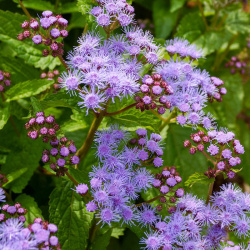 On Sale!
Mistflower Seeds
Eupatorium coelestinum
Create a vision of dreamy loveliness with a cloud of these soft, bluish purplish flowers. This wildflower is a great perennial for a border or a hedge because it's unique fragrance is very attractive to pollinators and butterflies.Quick View$3.75 Pkt - $64.00 / Oz
On Sale!
Mistflower Seeds
Eupatorium coelestinum
Create a vision of dreamy loveliness with a cloud of these soft, bluish purplish flowers. This wildflower is a great perennial for a border or a hedge because it's unique fragrance is very attractive to pollinators and butterflies.Quick View$3.75 Pkt - $64.00 / Oz -
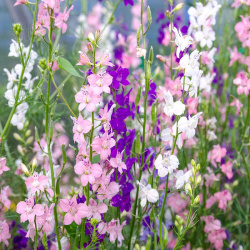 Rocket Larkspur Seed Mix
Delphinium ajacis
Blossoming in pink, blue, and white, these colorful spikes will bedazzle the eye. Larkspur is a favorite flower for many annual flower gardens and makes a beautiful cut flower as well. Hummingbirds love to visit this plant too.Quick View$3.48 Pkt - $7.59 / Oz
Rocket Larkspur Seed Mix
Delphinium ajacis
Blossoming in pink, blue, and white, these colorful spikes will bedazzle the eye. Larkspur is a favorite flower for many annual flower gardens and makes a beautiful cut flower as well. Hummingbirds love to visit this plant too.Quick View$3.48 Pkt - $7.59 / Oz -
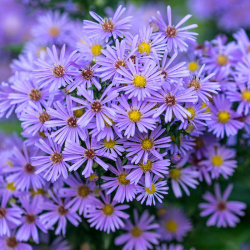 Out Of Stock
New York Aster Seeds
Aster novae-belgii
With bright yellow centers and showy purple-pink petals, these flowers are sure to make a splash. This particular variety was cultivated as early as the eighteenth century.Quick View$3.48 Pkt - $32.00 / Oz
Out Of Stock
New York Aster Seeds
Aster novae-belgii
With bright yellow centers and showy purple-pink petals, these flowers are sure to make a splash. This particular variety was cultivated as early as the eighteenth century.Quick View$3.48 Pkt - $32.00 / Oz -
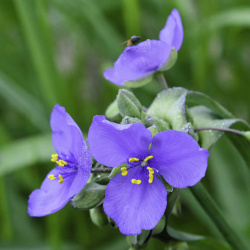 Ohio Spiderwort Seeds
Tradescantia ohiensis
Awake with the morning sunlight, these lovely flowers open in violet splendor. The blossoms last for just one day, but new blooms always open on the morrow. This native perennial is a popular choice for native plantings because it will grow in a wide variety of soils. It is also popular with the local honeybees.Quick Viewx
Ohio Spiderwort Seeds
Tradescantia ohiensis
Awake with the morning sunlight, these lovely flowers open in violet splendor. The blossoms last for just one day, but new blooms always open on the morrow. This native perennial is a popular choice for native plantings because it will grow in a wide variety of soils. It is also popular with the local honeybees.Quick ViewxOhio Spiderwort Seeds
Tradescantia ohiensis
Awake with the morning sunlight, these lovely flowers open in violet splendor. The blossoms last for just one day, but new blooms always open on the morrow. This native perennial is a popular choice for native plantings because it will grow in a wide variety of soils. It is also popular with the local honeybees.
$3.75 Pkt - $26.00 / Oz -
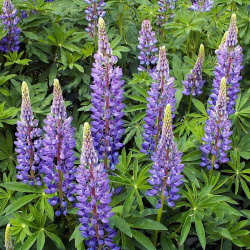 Perennial Lupine Seeds
Lupinus perennis
Once established, this lovely perennial will not disappoint with vibrant violet-blue hue. The elegant spikes are much larger than the native Wild Lupine and are easier to grow. This plant grows so vigorously that it can almost be invasive in the right conditions.Quick Viewx
Perennial Lupine Seeds
Lupinus perennis
Once established, this lovely perennial will not disappoint with vibrant violet-blue hue. The elegant spikes are much larger than the native Wild Lupine and are easier to grow. This plant grows so vigorously that it can almost be invasive in the right conditions.Quick ViewxPerennial Lupine Seeds
Lupinus perennis
Once established, this lovely perennial will not disappoint with vibrant violet-blue hue. The elegant spikes are much larger than the native Wild Lupine and are easier to grow. This plant grows so vigorously that it can almost be invasive in the right conditions.
$3.48 Pkt - $7.92 / Oz -
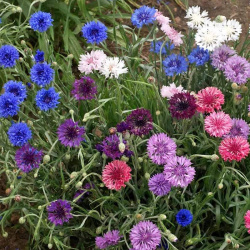 Polka Dot Bachelor Button Seed Mix
Centaurea cyanus
This easy-to-grow favorite annual comes in a bright mix of blue, purple, pink, white, and rose. Excellent for dried flower arrangements or potpourri. The plant is a dwarf, so it is great for gardens with limited space.Quick View$3.48 Pkt - $5.96 / Oz
Polka Dot Bachelor Button Seed Mix
Centaurea cyanus
This easy-to-grow favorite annual comes in a bright mix of blue, purple, pink, white, and rose. Excellent for dried flower arrangements or potpourri. The plant is a dwarf, so it is great for gardens with limited space.Quick View$3.48 Pkt - $5.96 / Oz -
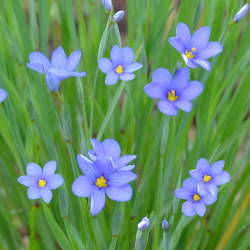 Prairie Blue Eyed Grass Seeds
Sisyrinchium campestre
Native to the prairie, this petite blue-eyed beauty is small in size, so it works well for small flower gardens or even container planting. Prairie blue-eyed grass can be a little tricky to grow from seed, but the mature plants are easily divided and transplanted.Quick Viewx
Prairie Blue Eyed Grass Seeds
Sisyrinchium campestre
Native to the prairie, this petite blue-eyed beauty is small in size, so it works well for small flower gardens or even container planting. Prairie blue-eyed grass can be a little tricky to grow from seed, but the mature plants are easily divided and transplanted.Quick ViewxPrairie Blue Eyed Grass Seeds
Sisyrinchium campestre
Native to the prairie, this petite blue-eyed beauty is small in size, so it works well for small flower gardens or even container planting. Prairie blue-eyed grass can be a little tricky to grow from seed, but the mature plants are easily divided and transplanted.
$3.96 Pkt - $260.00 / Oz -
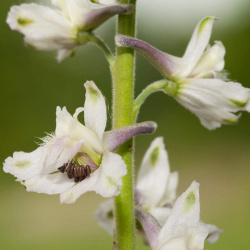 Out Of Stock
Prairie Larkspur Seeds
Delphinium virescens
Pretty spikes of whitish blossoms adorn this uncommon wildflower. This perennial cousin of the annual delphinium typically grows in drylands of the American Plains but is content to be grown in average garden soil too.Quick Viewx
Out Of Stock
Prairie Larkspur Seeds
Delphinium virescens
Pretty spikes of whitish blossoms adorn this uncommon wildflower. This perennial cousin of the annual delphinium typically grows in drylands of the American Plains but is content to be grown in average garden soil too.Quick ViewxPrairie Larkspur Seeds
Delphinium virescens
Pretty spikes of whitish blossoms adorn this uncommon wildflower. This perennial cousin of the annual delphinium typically grows in drylands of the American Plains but is content to be grown in average garden soil too.
$3.96 Pkt - $60.00 / Oz -
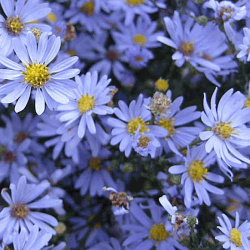 Out Of Stock
Rice Button Aster Seeds
Aster dumosus
These cheery, little flowers are as bright as a button. This notably adaptable species can be found growing wild in areas as diverse as sandy soil, open woods, bogs, or along roadsides.Quick Viewx
Out Of Stock
Rice Button Aster Seeds
Aster dumosus
These cheery, little flowers are as bright as a button. This notably adaptable species can be found growing wild in areas as diverse as sandy soil, open woods, bogs, or along roadsides.Quick ViewxRice Button Aster Seeds
Aster dumosus
These cheery, little flowers are as bright as a button. This notably adaptable species can be found growing wild in areas as diverse as sandy soil, open woods, bogs, or along roadsides.
$3.96 Pkt - $136.00 / Oz -
 On Sale!
Russell Lupine Seeds
Lupinus polyphyllus
Brilliant and bold in a rainbow of colors; this Lupine variety will provide colorful blooms all season. This flower is a cultivated variety of a Lupine that is native to the Pacific Northwest. It grows so quickly and easily that it can almost be invasive with the right growing conditions.Quick Viewx
On Sale!
Russell Lupine Seeds
Lupinus polyphyllus
Brilliant and bold in a rainbow of colors; this Lupine variety will provide colorful blooms all season. This flower is a cultivated variety of a Lupine that is native to the Pacific Northwest. It grows so quickly and easily that it can almost be invasive with the right growing conditions.Quick ViewxRussell Lupine Seeds
Lupinus polyphyllus
Brilliant and bold in a rainbow of colors; this Lupine variety will provide colorful blooms all season. This flower is a cultivated variety of a Lupine that is native to the Pacific Northwest. It grows so quickly and easily that it can almost be invasive with the right growing conditions.
$3.48 Pkt - $8.20 / Oz -
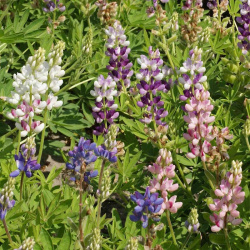 Sky Lupine Seeds
Lupinus nanus
This dwarf variety is a mixture of the various colors of Lupines found in the mountains and valleys of the West. These can be quickly grown as colorful annuals in gardens all over the country.Quick View$3.25 Pkt - $7.52 / Oz
Sky Lupine Seeds
Lupinus nanus
This dwarf variety is a mixture of the various colors of Lupines found in the mountains and valleys of the West. These can be quickly grown as colorful annuals in gardens all over the country.Quick View$3.25 Pkt - $7.52 / Oz











